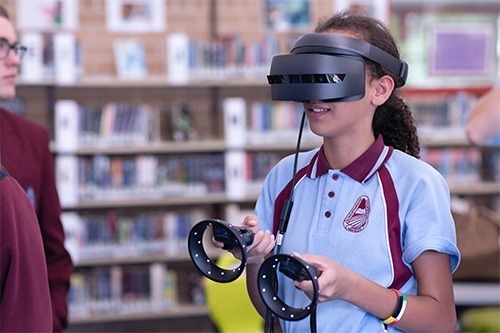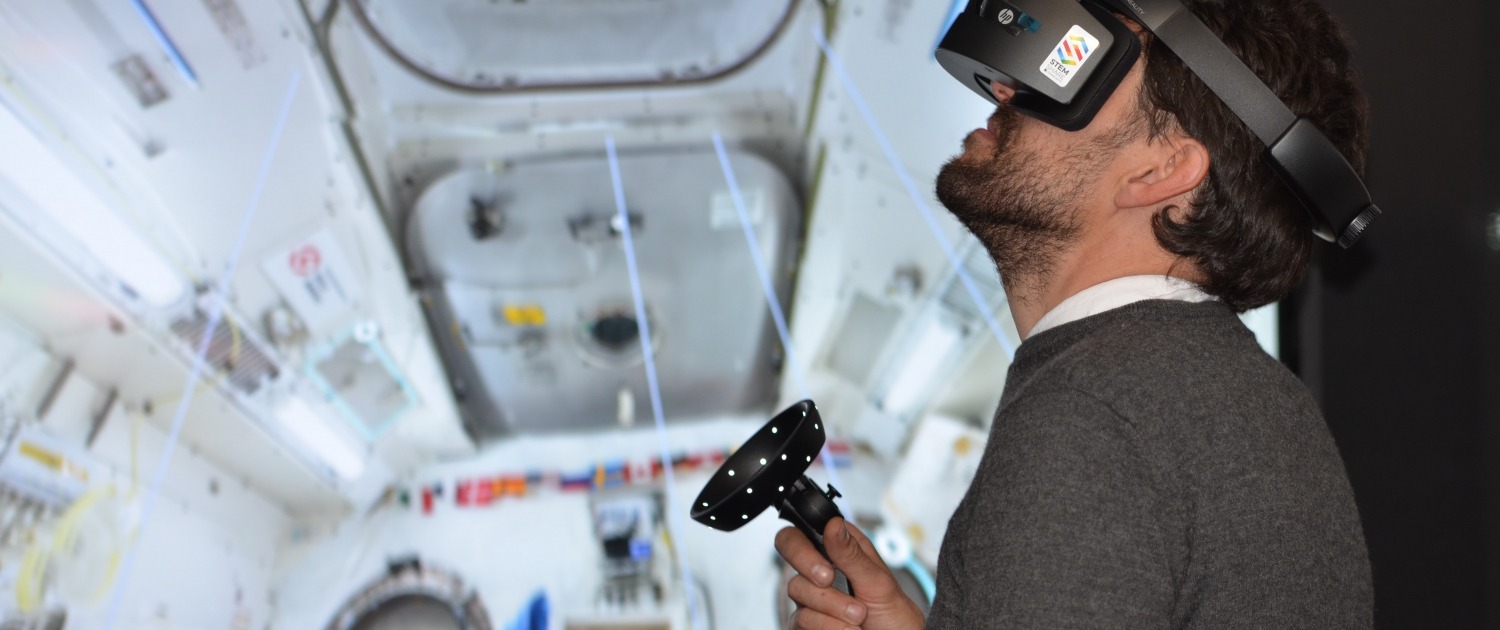Virtual reality has the potential to disrupt a number of industries by providing immersive, realistic experiences that can be used for training, education, entertainment, and more. Some of the industries that VR is likely to disrupt include healthcare, education, retail, military, manufacturing, and architecture. VR has already begun to make an impact in these industries and it is expected that the potential applications of VR will continue to grow.
Healthcare
Healthcare is one of the industries that is most likely to be disrupted by VR. VR can be used for training doctors and surgeons, as well as for patient rehabilitation. VR allows healthcare professionals to gain experience in a safe and realistic environment, without putting patients at risk. VR also has the potential to be used for pain management and to provide virtual reality exposure therapy for conditions such as PTSD.
Some examples of how VR is currently being used in healthcare include:
- Training medical students: Medical schools are using VR to give students the opportunity to experience procedures such as surgery without having to put patients at risk. This allows students to gain experience in a safe and realistic environment.
- Pain management: VR is being used to help manage pain for patients who are undergoing treatment for conditions such as cancer. VR can provide distraction from pain and can also be used to help patients relax and cope with anxiety.
- PTSD exposure therapy: VR is being used to help patients with PTSD confront their fears in a safe and controlled environment. This type of therapy has been found to be effective in reducing symptoms of PTSD.
- Virtual reality simulations: VR simulations are being used to prepare surgeons for complex procedures. This allows surgeons to rehearse the procedure in a realistic environment before performing it on a patient.
Education

Virtual reality has the potential to revolutionize education by providing immersive, realistic experiences that can be used for simulations, virtual field trips, and more. It can provide students with opportunities to learn in a safe and realistic environment without having to leave the classroom. VR simulations can be used to teach students about difficult concepts, such as how to perform surgery or fly a plane. Virtual field trips can take students to places they might not otherwise be able to visit, such as ancient ruins or the bottom of the ocean.
Some examples of how VR is currently being used in education include:
- Classroom simulations: VR simulations are being used to give students the opportunity to experience real-world situations without having to leave the classroom. This allows students to learn in a safe and controlled environment.
- Virtual field trips: VR is being used to take students on virtual field trips to places they might not otherwise be able to visit. This allows students to learn about different cultures and history in a more immersive way.
- Language learning: VR is being used to help students learn languages by Immersing them in a realistic environment where they can practice speaking the language.
- STEM education: VR is being used to teach STEM concepts, such as physics and engineering. This allows students to visualize complex concepts and see how they apply in the real world.
Retail
Whether it’s in a store or shopping from home, VR has already had a positive effect on the retail industry. From improving the shopping experience to marketing and demonstrations, there are numerous ways that VR has disrupted the retail industry.
Some examples of how VR is currently being used in retail include:
- Product demonstrations: VR can be used to give customers a realistic demonstration of a product before they purchase it. This can be particularly helpful for products that are difficult to demonstrate, such as cars or appliances.
- Virtual store environments: VR can be used to create virtual store environments that allow customers to explore products and make purchases without having to leave their homes. This can be especially helpful for customers who live in remote areas or who have difficulty traveling to brick-and-mortar stores.
- Customized shopping experiences: VR can be used to create customized shopping experiences for customers based on their preferences. This allows customers to get the most relevant results when they are searching for products.
- Product visualization: VR can be used to allow customers to visualize how a product will look in their home before they purchase it. This can be helpful for furniture or home décor items.
Entertainment
Since the inception of commercial VR, the potential for it to disrupt the entertainment industry has been obvious. It has changed the way that we consume entertainment forever. Games, movies, music, and more have all been drastically changed by the implementation of VR.
Some examples of how VR is currently being used in entertainment include:
- Video games: VR is being used to create immersive video game experiences that allow players to feel like they are inside the game. This is providing a new level of immersion and interactivity for gamers.
- Movie theaters: VR is being used in some movie theaters to provide an immersive experience for viewers. This allows viewers to feel like they are inside the movie and can even interact with the characters.
- Live events: VR is being used to bring live events, such as concerts and sports games, to viewers at home. This allows viewers to feel like they are at the event and can even choose their own perspective.
- Virtual reality parks: VR parks are popping up all over the world, providing a place for people to come and experience VR. These parks usually have a variety of different VR experiences to choose from.
Military
While the uses of VR in the military are currently limited, they have already had a strong impact. VR has allowed for a level of simulation training and safety that has never been seen before. This allows soldiers to be more prepared for a variety of situations.
Some examples of how VR is currently being used in the military include:
- Training simulations: VR is being used to create realistic training simulations for soldiers. This allows soldiers to be prepared for real-world situations and reduces the need for live-fire training.
- Combat simulations: VR is being used to create simulations of combat situations. This allows soldiers to experience different types of combat and learn how to react in different circumstances.
- Mission planning: VR is being used to help plan missions by providing a realistic representation of the environment. This allows mission planners to see potential hazards and plan accordingly.
Manufacturing
VR has a number of great uses in manufacturing. It has the potential to improve design, efficiency, and training. It has quickly been adopted as a valuable tool for many companies to improve in many areas.
Some examples of how VR is currently being used in manufacturing include:
- Product design: VR is being used to design products in a virtual environment. This allows designers to test different designs and make changes before the product is actually created.
- Assembly line simulations: VR is being used to create simulations of assembly lines. This allows manufacturers to see how different assembly methods would work and to choose the most efficient method.
- Quality control: VR is being used to inspect products for defects in a virtual environment. This allows manufacturers to catch defects early and prevent them from becoming expensive problems.
- Training: VR is being used to train workers on how to use new equipment or perform new tasks. This allows workers to get the training they need without having to take time away from their work.
Architecture
VR is a perfect pairing for creativity and working on a large scale. This is why VR has quickly become a staple of the architecture industry. From training to design, to simulated implementation, VR has shown that it can be useful in any step of the process.
Some examples of how VR is currently being used in architecture include:
- Design: VR is being used to design buildings and other structures in a virtual environment. This allows architects to experiment with different designs and make changes before the project is actually built.
- Simulations: VR is being used to create simulations of how a building will look and function. This allows architects to see how the building will work in real life and make changes accordingly.
- Visualizations: VR is being used to create visualizations of how a building will look when it is finished. This allows architects to present their plans to clients and get feedback before construction begins.
- Training: VR is being used to train workers on how to build new types of structures. This allows workers to get the training they need without having to take time away from their work.
Conclusion
As you can see, there are many examples of how VR has and will continue to disrupt a wide variety of industries. From healthcare and education to retail and entertainment, VR is changing the way we live and work. And this is just the beginning. As VR technology continues to develop, the potential applications are endless. So far, VR has been used to create realistic training simulations for soldiers, design products in a virtual environment, and even bring live events to viewers at home. The possibilities are endless and it will be interesting to see what new applications for VR arise in the future.

